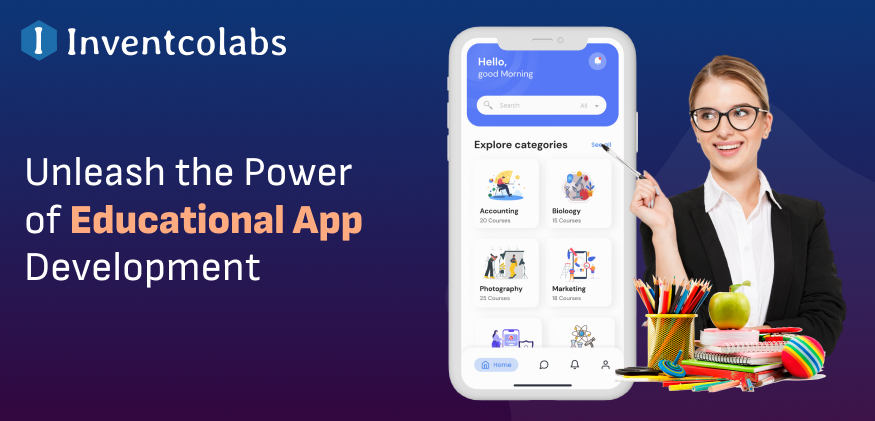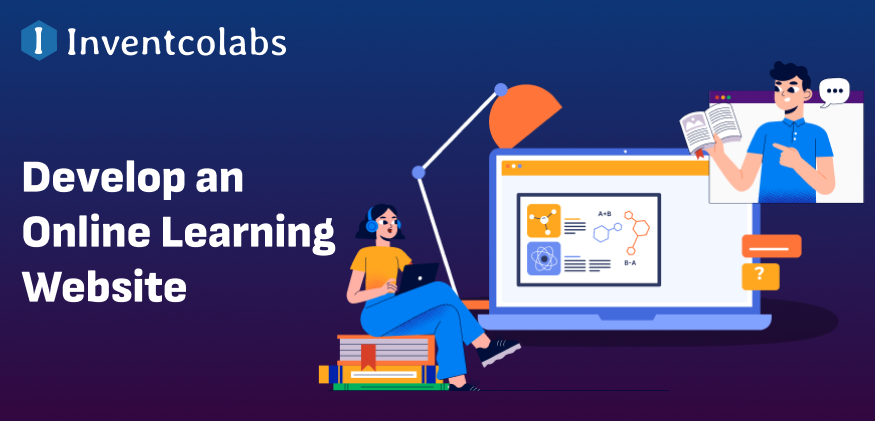Education is constantly evolving due to technological advancements that challenge traditional methods of instruction. Apps now play an integral part in the student experience by offering exciting, interactive learning experiences for learners of all ages. From language acquisition and math/science instruction to coding courses, these applications meet learners and learning styles of all kinds and provide personalized experiences adapted specifically to individual preferences and learning styles.
As we leverage digital power and enter a more digital future, advanced tools promise an easier, brighter learning future for all. They break geographic borders to allow users to participate in learning activities at any time from any place, creating an unparalleled global education experience for users worldwide.
The eLearning solutions market is forecasted to grow to $46.9 billion by 2025 and make e-learning increasingly integral to society. Coursera, Skillshare, and Duolingo—well-known e-learning mobile apps that facilitate this type of education—allow learners to access learning materials anytime from wherever they may be located.
Understanding the Edtech Market
Before COVID-19, businesses depended on digital tools for learning and development. ELearning accounts for almost 40% of the North American $5 billion business L&D market, demonstrating the importance of these technologies. Since they are a part of the EdTech market that has risen beyond the classroom, students benefit from its no limits to the types of education available. Furthermore, the geographic barrier will never be a problem when education and technology are combined. Students and teachers worldwide can assist in teaching and guiding students and professionals working in the field.
Edtech firms typically wish for the value they receive from their clients to go beyond the cost of keeping them. Therefore, the growth opportunities are endless. The predicted expansion of more than $288 billion in 2031 is a testimony to the growing popularity of education online.
There are dozens of EdTech “unicorn” start-ups with valuations exceeding $1 billion. This suggests that the EdTech sector now has a significant share, contributing more than 80% of worldwide sales to education. It was previously confined to the world of education, but it has surpassed its limits, leading to a paradigm shift in how we think about learning.
What Is an E-Learning App?
In simple terms, an e-learning application is a digital platform designed to help students learn and educate themselves electronically, usually using tablets, smartphones, or computers.
They provide a wide variety of educational content, including tutorials, courses, and interactive content, which allow users to learn new skills and knowledge quickly and easily.
Consider, for instance, the Khan Academy app. It’s an excellent example of an e-learning application that offers instructional videos and activities covering various subjects, including science, mathematics, and humanities. Users can access these materials anytime, anywhere, which makes learning more flexible and accessible.
E-learning applications like Khan Academy aim to democratize education by making top-quality learning materials accessible to everyone with an appropriate device and internet connection. They are altering the way we acquire knowledge in the digital age.
Explore More: How to Develop an Online Learning Website?
Categorizing Types of Educational Apps
Before embarking on your adventure of developing an educational app, deciding on the kind of educational app you’ll need to create is important. Here are a few instances of apps that are educational:
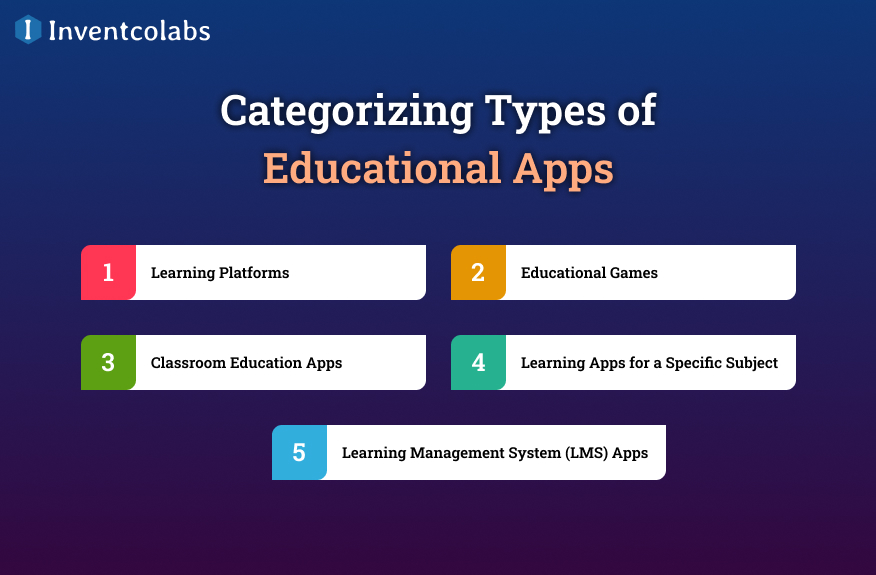
>Learning Platforms
Learning platforms are educational apps that provide students with many courses. Khan Academy is an example of an online learning platform. The platform can contract instructors to upload courses or decide to function as an online marketplace where independent course creators post their courses. Learning platforms award certificates to successful students, which will help their professional development.
>Educational Games
Learning apps based on gaming aim to make learning a game more enjoyable. The most successful gaming apps feature an engaging storyline and a gaming scenario that encourages gamers to play through the different phases of the game and gain information in the process.
Its Chegg app is a prime example of an educational app. It is also possible to use artificial intelligence within the field of education to create engaging educational games.
>Classroom Education Apps
Classroom apps are another favored kind of educational app. The apps for classroom education are utilized by colleges, schools, or coaching programs to provide instruction for their pupils. They provide an area in which parents, teachers, and students can see how the students are doing academically. Students.
>Learning Apps for a Specific Subject
Certain apps focus on specific topics instead of offering a variety of subjects. The concept behind creating the application is to target people who wish to learn specific subjects. Duolingo is one example of such an educational app.
With Duolingo, users can study any language. If you are creating a learning app that focuses on a particular topic, choose an area with a significant demand. If you don’t, you could end up stuck in a space in which the demand is low.
>Learning Management System (LMS) Apps
LMSs are typically utilized by large businesses to train their employees. An LMS can allow a company to train its employees in one common online location. TalentLMS is a good example of an application for a learning management system.
Explore More: Employee Training Mobile App Development Guide: Cost & Features
Importance of Technology in Developing Educational App
Integrating technology is key to creating an engaging and productive learning environment in the current educational landscape. With educational content accessible with just a click of online examinations and exams, eLearning platforms are changing how we think about education.
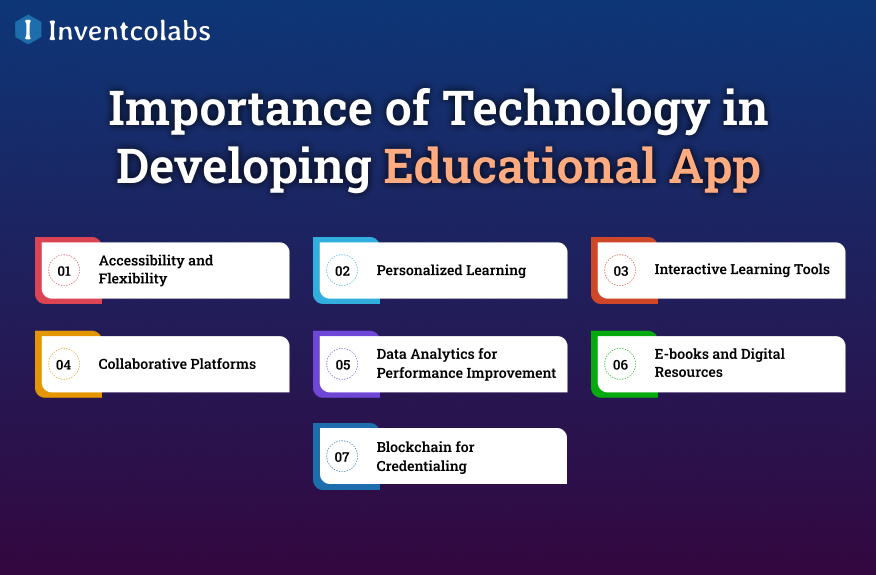
>Accessibility and Flexibility
Technology allows access to educational resources anytime and anywhere, eliminating geographical boundaries. Learning platforms online and virtual classrooms permit students to study independently.
>Personalized Learning
Artificial Intelligence (AI) and machine learning algorithms permit the creation of customized educational content to meet the individual needs of learners. Learning platforms that adapt to learning to adjust content based on student’s performance and provide a customized educational experience.
According to research in collaboration with the Grand View, the global AI in the education market will be worth $ 6.22 billion by 2025. This will grow by more than 37% between 2022 and 2030. This indicates the potential for the growth of personalized learning using the most advanced technologies
>Interactive Learning Tools
Virtual Reality (VR) and Augmented Reality (AR) enhance engagement by creating an immersive learning experience. Gamification features make learning more engaging and enjoyable, which helps to improve knowledge retention.
>Collaborative Platforms
Cloud-based collaboration tools allow for the seamless exchange of information and collaboration between educators and students. Collaboration in real-time on documents and projects can enhance the overall learning experience.
>Data Analytics for Performance Improvement
Analytics for learning and data-driven insights assist educators in tracking their student’s progress and pinpointing improvement areas. Predictive analytics also help develop early intervention strategies for struggling students.
>E-books and Digital Resources
The shift from traditional textbooks to electronic books and digital resources can reduce their environmental footprint and costs. Digital multimedia with rich multimedia formats improves the quality of educational resources.
>Blockchain for Credentialing
Blockchain technology guarantees the security and authenticity of academic credentialing, which reduces the chance of being a victim of fraud. Digital badges and certificates stored on blockchains provide a clear and authentic record of accomplishments.
Steps to Follow for Educational App Development in 2025
The eLearning app development services is a complicated task, and you should make sure that you take care of each step to ensure the final product meets your requirements. Below are the steps to develop an app to help you create an educational application.
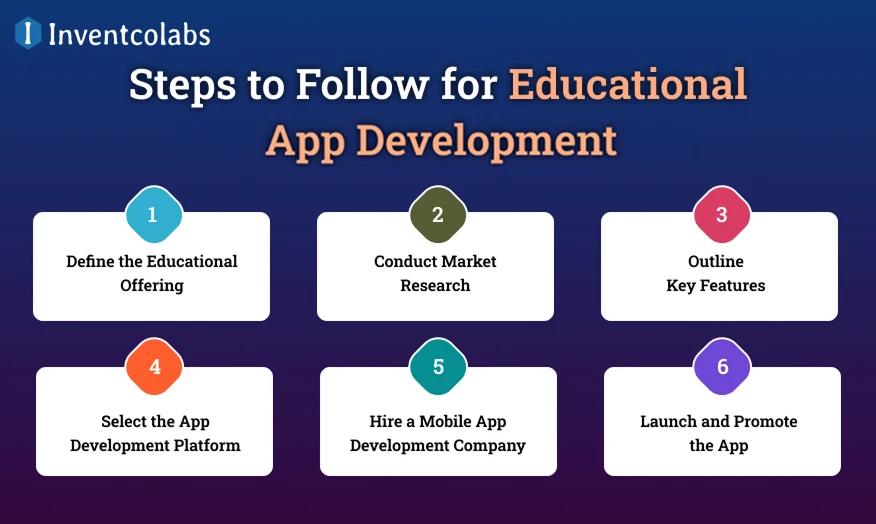
>Define the Educational Offering
Make a map of the educational app you’d like to offer. The choice of the type of educational app you’d like to create is essential since it will allow you to determine in advance the kind of functions and features you would like to include in your app.
For instance, if you plan to develop an app that teaches languages like Duolingo, you’ll need to concentrate on including the most popular languages in your app. You may need to develop an inventory of native speakers integrated into an app and acting as instructors. Create a function that enables tutors to give individual instruction to students. Include a feature that permits students to view small-sized videos and audio and complete tests to reinforce their knowledge.
>Conduct Market Research
As an entrepreneur, you invest lots of time and effort in developing educational apps. You certainly don’t want to make a risky decision with this. This is why thorough market research is crucial: it can help you eliminate potential pitfalls within the business model.
For market research, browse the app stores for apps that match your ideas. Examine the user reviews that are published on app stores. User reviews typically reflect customers’ needs; therefore, you should focus your attention on the negative reviews to find the weaknesses in your competitors’ offerings. Be sure to add features that can close the gap. You can also engage an expert market research firm to do a thorough market analysis to help you develop your educational app.
When these two steps are completed, you can choose the features you’d like to add to your education app.
>Outline Key Features
Deep market research can assist you in identifying the features your education app requires. Be aware of your users’ needs when designing your educational app’s features. An excellent way to find out about features your users would like is to check out the comments section of the educational apps on Google Play Store and Apple App Store. Google Play Store and Apple App Store.
Many app users could have posted their feedback and hopes for the education app through the comment section. There are also suggestions for features users want in future updates. Follow these suggestions, and incorporate these apps into your educational application before you start.
You could also create polls and inquire about what features they would like for an educational application.
>Select the App Development Platform
The most important decision you’ll need to make before you begin educational app development is whether you wish to create a native application that runs on Android and iOS platforms or prefer to pursue cross-platform application development. Native apps run on the platform on which it was designed. For example, a native Android application will only run on an Android platform, whereas the iOS native app will work solely within an iOS platform. A cross-platform app, however, will work on both iOS and Android platforms.
Selecting the best platform for your educational app is an important choice because it will impact its overall development.
In this situation, it is recommended that you seek the advice of an education app development company. App developers review your app and help you select the right platform to meet your needs.
>Hire a Mobile App Development Company
The next step is to identify an experienced education app development firm. Many entrepreneurs make the error of bringing in amateur developers who don’t have the necessary expertise in developing apps for education. Don’t make this error and hire mobile app developers to create your app for education since the wrong choice can affect its quality.
>Launch and Promote the App
After your app for education is completed, the next step is to release it across various app stores. Be sure that the mobile app development firm you select to work with has sufficient experience and knowledge in launching apps in app stores. Your app must be compliant with the app store’s guidelines to launch successfully.
Knowing that launching an application via the Google Play store Google Play store is different from launching it through the Apple app store. Strict guidelines for application submission guidelines characterize Apple’s app store.
The work you have put into developing an education app is completed once you launch your app. When the app is launched, you’ll need to promote it. Hiring an experienced digital marketing firm on our list to perform the work for you is possible. The digital marketing firms on the list below have been evaluated across various quality indicators to make sure that you can pick among the top firms in the business.
Check that your digital marketing agency knows ASO (App Store Optimization) methods. Without the knowledge required, the app won’t be given an appropriate ranking in app stores. Without a high rank, your app won’t get the most users.
Explore More: What is Metaverse? A Guide To The Next-Gen Virtual Dimension
Must-Have Features to Include in Educational Application
If you plan to create an educational app to teach or learn, consider what features you should include. There are a few fundamental aspects that all educational apps need to incorporate:
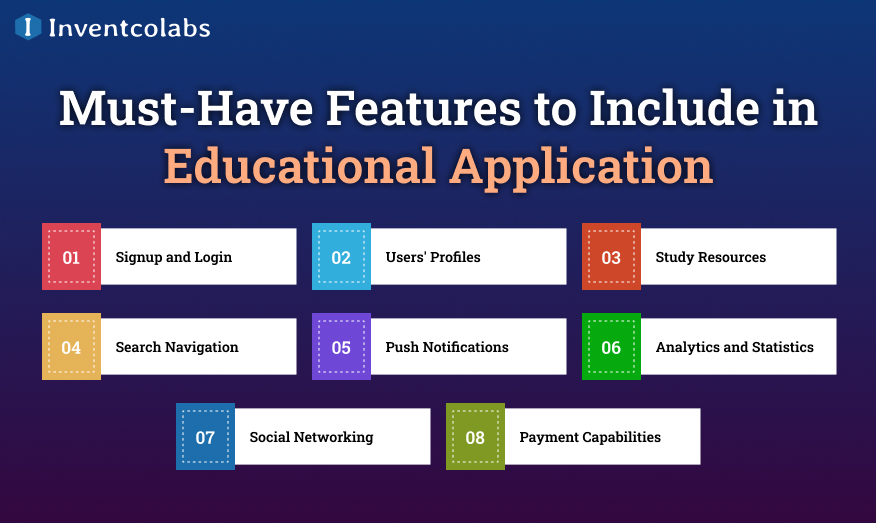
>Signup and Login
You can speed up the process of user onboarding by offering Google (or any other type of email) account registrations. User experience (UX) is enhanced by integrating social networking features such as Facebook, Twitter, and LinkedIn.
>Users’ Profiles
Students can manage their schedules, use the app, and track their performance. This feature will make it easy for teachers to organize their students’ schedules, upload documents, and gain insight into their performance metrics.
>Study Resources
To ensure a rich learning experience, reliable, organized, and diverse learning resources, including written exercises, videos, audio, and live-streamed lectures, are essential for effective learning.
>Search Navigation
Navigation should be straightforward. The ability to search is powerful, assisting users in finding particular areas quickly and helping teachers adjust their curriculum.
>Push Notifications
Push alerts can help rekindle interest and are particularly helpful in motivating students. They can also help teachers maintain their image and could lead to positive app evaluations.
>Analytics and Statistics
Provide teachers and students with access to information on a program’s effectiveness and what students are learning so they can make adjustments promptly.
>Social Networking
The ease with which students can share their work with others through social media integration increases their confidence. In addition, one-click sharing helps to promote the development of the program.
>Payment Capabilities
Applications intended to earn money must incorporate payment functions. You can choose between payments via subscriptions, in-app purchases, and paid downloads. These types of subscriptions are standard and require the use of payment processors.
Including these features will create an effective and user-friendly education application that benefits teachers and students.
Cost of Developing an Educational App
The solution you have in mind can significantly impact the development costs of your app.
Furthermore, the cost of development is affected by the language used. Kotlin and Swift are among the most used languages to create native Android and iOS apps and apps for iOS, respectively. Flutter is a good choice when you’re looking for a cross-platform application.
It is possible to purchase an app for learning languages, such as Duolingo, for around $80K. However, something similar to Google Classroom built based on various other Google services (e.g., Google Docs) will likely be more expensive than $100K.
The hourly average for mobile app developers is $30, contingent on the developer’s degree of competence. The app’s features and functionality, as well as its aesthetics, curriculum, and functionality, will all impact the price of your app. Most apps require a database to store data.
Even a child’s application should be secured securely. Even the smallest leak could be devastating to your image and business. In the end, a basic application could cost from $15,000 to $30,000.
The Key Takeaway
It was all about mobile application development, as well as the most current developments and methods in the field. In the end, education app development is a profitable business, and there are better methods to create apps with the most efficient budgets and timeframes. The future of mobile apps is promising.
If you’re a developer who would like to explore developing custom apps or an owner of a business who knows little about programming but would like to have an app, there’s an option for all. Utilize the right tools and resources to make the most of it.
Choose the most effective mobile app development tool that does not require any code or how-to code. Learn the basics of app development or create advanced-level applications. Develop your application or hire the top mobile app development company to create the app for you. Before all else, pick the platform that will allow you to build both and grow your apps according to your needs.
